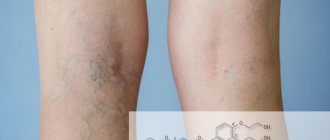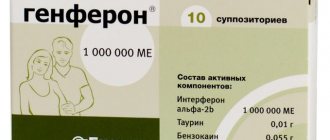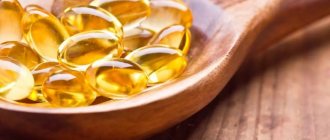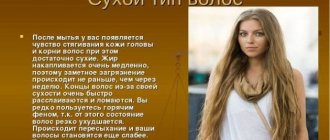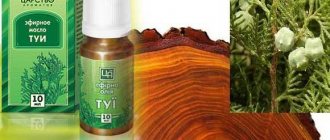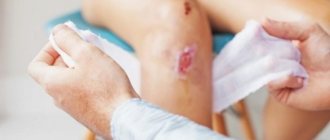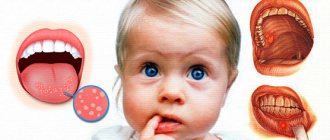September 19, 2018
Averyanova Sveta
Inflamed adenoids cause babies a huge amount of inconvenience and problems. Discomfort in sleep, deafness, decreased mental abilities, chronic rhinitis and otitis as a consequence of advanced disease frighten parents. Thuja oil has become a popular method of treating adenoid hypertrophy in recent years. What are its benefits and how to use it to treat children, we will talk in our article.
Adenoids and their degrees
Every person has adenoids. They are located in the nasopharynx and protect the body from viruses and bacteria entering the mucous membrane. In adults and adolescents after 15 years of age, adenoids are small in size, in children before puberty they are slightly larger. This is due to the fact that babies are more often attacked by pathogens and are in greater need of protection due to weak immunity.
Against the background of frequent acute respiratory viral infections, acute respiratory infections, and in the presence of pathologies in the development of children of kindergarten or school age, the adenoids become inflamed and close the passage for air.
In this case, the adenoids themselves become a source of disease. Lack of oxygen provokes a lag in mental and intellectual development. With difficulty breathing, the child sleeps poorly, gets sick more often, and becomes physically weaker.
Inflammation of the adenoids is a reason to seek help from an otolaryngologist. After examination and laboratory tests, the stage of development of the disease is determined and a course of treatment is prescribed.
The classification of tonsil hypertrophy is presented in the table (Important! The table can be scrolled left and right on mobile devices):
| Degree | Symptoms | Consequences of lack of treatment |
| 1st degree | Inhaling air through the nose is difficult when lying down, at night. During the day, the child breathes calmly through his nose. | Insomnia, restlessness at night. |
| 2nd degree | Almost complete absence of free breathing through the nose at any time of the day. Night snoring. Sore throat, cough due to mucus draining into the throat. Nasality. | Breathing through the mouth. Physical weakness. Malaise, lethargy. Frequent ARVI. Psychological apathy. Poor performance at school due to illness and brain hypoxia. |
| 3rd degree | One hundred percent obstruction of the nasal passages. Breathing through the mouth is constant, lips hardly compress. Irritation of the throat mucosa. Stopping breathing during sleep. Hoarseness of voice. | Headache. Chronic ARVI, colds, rhinitis. Hearing loss. Purulent otitis. Mental instability, irritability. Low intellectual and physical activity. |
Lack of treatment for adenoids in childhood and adolescence affects the quality of life in the future.
For this reason, parents of constantly ill children resort to classical medicinal methods of therapy and use traditional methods.
Homeopathy, for example, is recommended by doctors who have noticed the positive effects of herbs and oils on the body. Thuja oil for adenoids in children is recognized as an effective treatment method. It is combined with pills and physiotherapy. Prescribed from early kindergarten age.
For what degree of adenoids does your child have, do you use Thuja oil?
- 2nd set 58%, 198 votes
198 votes 58%198 votes - 58% of all votes
- 1st degree 23%, 78 votes
78 votes 23%
78 votes - 23% of all votes
- 3rd degree 16%, 56 votes
56 votes 16%
56 votes - 16% of all votes
- For prevention 3%, 11 votes
11 votes 3%
11 votes - 3% of all votes
Total votes: 343
19.09.2018
×
You or from your IP have already voted.
Indications for use
Thuja oil is designed to combat a common childhood pathology – adenoids.
And most importantly, it is used even to treat very tiny children. Source: flickr (sally anscombe). The first sign of pathology is nasal congestion without a runny nose. In some cases, a runny nose is possible, but it is severe; the discharge often acquires an unpleasant odor and changes color. Physiological processes: proliferation of lymphoid tissue leads to edema. Such manifestations are infectious in nature, and if treatment is not started in time, the baby may develop many complications:
- Hearing impairment;
- Problems with tooth growth;
- The chest slows down its development;
- The brain begins to lack oxygen, which means mental activity deteriorates;
- Increased susceptibility to infectious diseases;
- Problems with the central nervous system.
The list can be continued for a long time - this was just the main list of possible complications. Thuja oil copes with all manifestations in the initial stages and allows you to avoid surgical intervention.
An omission in treatment makes medication ineffective, so it is extremely important to send the child for examination on time.
Important information: swelling and infection are only a small part of the problems associated with adenoids. Surgical intervention, although effective, can cause serious stress to the baby’s body, already weakened by the disease. Don't neglect preventative procedures.
Thuja oil helps not only in the treatment of adenoids, but also with sinusitis, laryngitis and other respiratory diseases.
But you should not self-medicate. Only a competent specialist will be able to determine the form and stage of the disease and prescribe the appropriate medications. In some cases, homeopathic treatment may not be enough.
Properties of the drug:
- Antibacterial;
- Relieves swelling;
- Facilitates the breathing process;
- Accelerates the outflow of purulent accumulations;
- Softens pus and mucus.
What is the effect of thuja on adenoids?
People began to use thuja as a medicine from the 15th-16th centuries. For the first time, the effectiveness of evergreen oil was recorded by Christian Hahnemann, who is considered the founder of homeopathy.
Doctors in Western Europe called thuja the tree of life, treated diseases of the respiratory system with pine esters, stopped bleeding, and killed parasites. A recipe was created for making oil from thuja cones by distilling them. The method of extracting useful components has not changed much to this day.
Modern chemical science can, from a practical point of view, explain the usefulness and effectiveness of thuja for the treatment of adenoids. The secret is in the composition of the product. It contains:
- Flavonoids. These natural components have a positive effect on the activity of enzymes and the functioning of the body as a whole.
- Aromatic resin. Makes breathing easier and gives the oil a pleasant fresh aroma.
- Aromadendrin. Contained in thuja leaves. Restores the nasal mucosa.
- Essential oil. Eliminates pathogenic flora in the nasopharynx, relieves swelling.
- Sesquiterpene alcohol.
Constricts blood vessels, normalizes breathing. Calms the nervous system, which has a positive effect on sleep. - Tannins. They have an astringent, anti-inflammatory effect.
- Ascorbic acid, tannin. Act as immunomodulators.
The chemical composition of the extract from thuja cones allows the product to have a positive effect on the body in the following areas:
- reduces the frequency of acute respiratory infections, acute respiratory viral infections;
- relieves nasal congestion, frees up the passages for breathing;
- relieves pain in inflamed nasal passages, nasopharynx, irritated throat;
- normalizes the size of adenoids;
- has a wound healing effect;
- calms the nervous system;
- increases the baby's immunity;
- constricts the vessels of the nasopharynx;
- normalizes the functioning of the body's metabolic systems.
The use of thuja makes it possible to get rid of the consequences of inflammation of the adenoids. Children sleep better, become cheerful and active. The brain does not experience oxygen starvation, so it works actively.
This is interesting! Thuja is a tree from the cypress family. Grows in North America and East Asia. But it is often used as an ornamental plant to decorate public parks, winter gardens, and greenhouses. Today, the main producers of thuja oil are companies from Canada and the USA.
Features of the drug
All drugs have their own characteristics of use and homeopathic ones are no exception.
Consumption of caffeinated drinks and alcohol can significantly reduce the effectiveness of treatment. And if you eat onions, cinnamon, poppy seeds, and garlic, the therapeutic effect may be reduced to zero. Source: flickr (Matt Ward)
When starting treatment, listen carefully to all the doctor’s recommendations and follow them strictly. Of course, if you want to get results.
The drug does not affect the ability to drive vehicles in any way, and is also not addictive.
Indications and contraindications
Thuja oil is prescribed to children for the following diseases:
- I–II degree of adenoid hypertrophy
- otitis
- bronchitis
- sinusitis
- chronic sinusitis
- polyps in the nasopharynx
- cough.
You should not use this natural remedy for the treatment of ARVI, rhinitis, adenoids on your own, without the advice of a doctor, especially in children.
Since thuja oil has several contraindications:
- allergy to essential oils
- pine needle intolerance
- age up to 3 years
- epilepsy.
Important! After the first use of thuja, monitor the child’s condition, even if he has no contraindications to the use of a homeopathic remedy. If you observe redness, swelling, or increased difficulty breathing, stop the course of treatment and seek advice from a doctor.
general information
Often, the first thing doctors advise parents with grade 3 adenoids in children is surgical intervention. Of course, adenotomy helps alleviate the child’s condition and restore normal breathing.
However, even surgery cannot give one hundred percent confidence that the disease will not recur. In some cases, it is enough to resort to so-called conservative or alternative treatment methods to forget about enlarged adenoids once and for all. In this material we will talk about how to treat grade 2 adenoids in children and discuss the most effective medications used in therapy.
Preparations with thuja oil
You cannot purchase and use pure (100 percent) thuja oil to treat adenoids in children.
It needs to be diluted correctly, but it is better to buy a ready-made mixture at the pharmacy. Pharmaceutical companies offer several drug options.
"Thuja Edas-801"
Produced in the Russian Federation. Prescribed for children with chronic rhinitis, otitis, nasopharyngeal polyps. It has a gentle effect due to the addition of olive oil.
Benefits: actively heals tissue on the mucous membrane of the nose and throat; does not cause allergies or irritation; there are no side effects.
"Thuja DN"
Produced in Russia. Prescribed to children for the treatment of adenoids and rhinitis.
Advantages: complex drug; suitable for the treatment of complications, purulent discharge from sinusitis, otitis media.
Disadvantages: instillation is not recommended if you are allergic to pine needle essential oil, or if you have a runny nose during an acute period.
"Thuja GF"
Produced in St. Petersburg. Prescribed for rhinitis, purulent nasal discharge, thick mucus.
Benefits: has a beneficial effect on the mucous membranes of the nose and throat; effectively relieves irritation.
Disadvantages: allergic reactions to the substances included in the composition may occur.
"Thuja S6"
Produced in Russia in the form of granules for oral administration. Prescribed for grade I–II adenoids, fibroids, lipomas. Contains thuja tree extract.
Advantages: has wound-healing, anti-inflammatory properties.
Disadvantages: difficult to use for treating young children; long course of treatment – (4–6 months).
Important! Leave the choice of treatment for children to your doctor. He will take into account the child’s age and possible side effects. Don’t forget to ask in detail or read the instructions on how to drip thuja oil to a child with adenoids to avoid an overdose.
Description of the drug
Homeopathic medicines, due to their low content of active components, are less likely to have a negative reaction and are successfully used in treatment.
During homeopathic treatment, the active substance is dissolved until it is completely depersonalized, so Thuja Oil cannot be called such. Concentration D1 indicates a dilution of 5 g of thuja occidentalis extract per 100 g of oil. And such a norm is not characteristic of homeopathy.
Thuja oil is a cross between allopathic and homeopathic remedies: for some the concentration is too high, for others it is low. The composition of the main components of the product is simple: petroleum jelly and occidental thuja extract. However, it is worth paying attention to additional components, and these are:
- A large number of resins;
- Tannins;
- Pinin;
- Tuin;
- Saponites;
- Pilen;
- Flavonoids;
- Aromadendrin.
The drug is diluted 1:10, which means a 100 g bottle will contain 0.5 g of the active ingredient. Available in the form of drops.
Important information: purchase Thuja Oil only in pharmacies. Never use pure oil for internal use. Only a homeopathic remedy is suitable for these purposes. Be careful.
Timing and treatment regimens
After making an accurate diagnosis and identifying the degree of development of inflammation in the nasopharynx, a treatment regimen using thuja is prescribed. There are several such schemes.
Important! Before putting any cold remedy or oils into your nose, clean the mucous membrane. Use safe sprays “Dolphin”, “Otrivin”, “Aquamaris”, dilute sea salt in water yourself.
Burying
Otorhinolaryngologists choose one of the following schemes depending on the condition of the nasopharynx and the age of the baby:
| Scheme | Activity | Procedures |
| 1 | 6 weeks | 3 times a day, drop the pharmaceutical product into each nasal passage, 2–4 drops. |
| 2 | 6 weeks | Therapy is carried out in stages: • 1st week To cleanse the nose, we use Aquamaris spray and instill protargol into each nostril. We wait 20 minutes. Place 1-2 drops of oil into each nostril. • 2nd week We clean the nose, instill protargol. It is better to lie down at this time. After 15–20 minutes, we inject Argolife, an antimicrobial agent, into the nostrils. • 3rd week We repeat the course of the 1st week. • 4th week We repeat the course of the 2nd week. • We alternate the 5th and 6th weeks in the same way. Procedures are carried out 2–3 times a day. |
| 3 | 4 weeks | In the 1st–2nd week after washing the nose, inject 4 drops of pharmaceutical oil into the nostrils. We rest for 14 days. We repeat the procedure for another 2 weeks. |
| 4 | 4 weeks | For 1–2 weeks, 6–8 drops of western thuja are instilled into the nose, 6–8 drops in each passage. 7 days – break. Repeat the course – another 2 weeks. |
Important! Warm the product to room temperature before using nasally. Hold the bottle in your palm or under the pressure of hot water.
Inhalations
You can inhale essential oils if your baby does not have a strong cough or fever. To carry out the procedure you will need:
- boiling water;
- child size inhalation mask;
- thuja oil
Place 5 drops of the product into a container of boiling water (250 ml of water).
Let the baby breathe 1-2 times a day for 15 minutes. Inhalations can be performed on children over 5 years of age. The duration of treatment is prescribed by the doctor.
Washing
For the procedure, prepare a mixture of herbal decoction:
- Mix sage, chamomile, calendula (total volume - 2 tbsp.)
- Pour boiling water over it.
- Leave for 20 minutes.
- Add thuja (20 drops).
- Cool.
- Strain.
- Rinse your nose 2 times a day.
In the same way, a mixture of chamomile and aloe vera with the addition of thuja oil is used. Continue the procedure until the child's condition improves without interruptions.
Important! Children under one year old should not rinse their nose with this herbal solution.
Aroma baths
For preschoolers over 5 years of age, add 5-6 drops of thuja cone extracts to non-hot bath water as a preventive measure and treatment for adenoids. You need to take the procedure every day for a month, then 2-3 times a week until complete recovery.
Aromatherapy
For adenoids, it is useful to breathe clean, aromatic air soaked in ethers. With the help of thuja and an aroma lamp, you can disinfect the room and create an optimal climate for night sleep in the nursery.
Proceed as follows:
- To enrich the entire apartment with useful substances, place 2-4 drops of pure substance on the lamp. Keep it on for 1-2 hours.
- You should add 1-2 drops of 100% product to your children's night aroma lamp no more than 2-3 times a week. In the morning, monitor your baby’s condition, especially if you use thuja-based nasal drops or use inhalations.
- If the baby is intolerant to essential extracts, herbs, infusions, aromatherapy cannot be used.
Interesting! Ether therapy can be used as a prophylactic against ARVI and adenoids in the whole family. To do this, it is enough to turn on the oil lamp in all rooms every week and apply 1 drop of ether diluted to 15% on the pillows.
